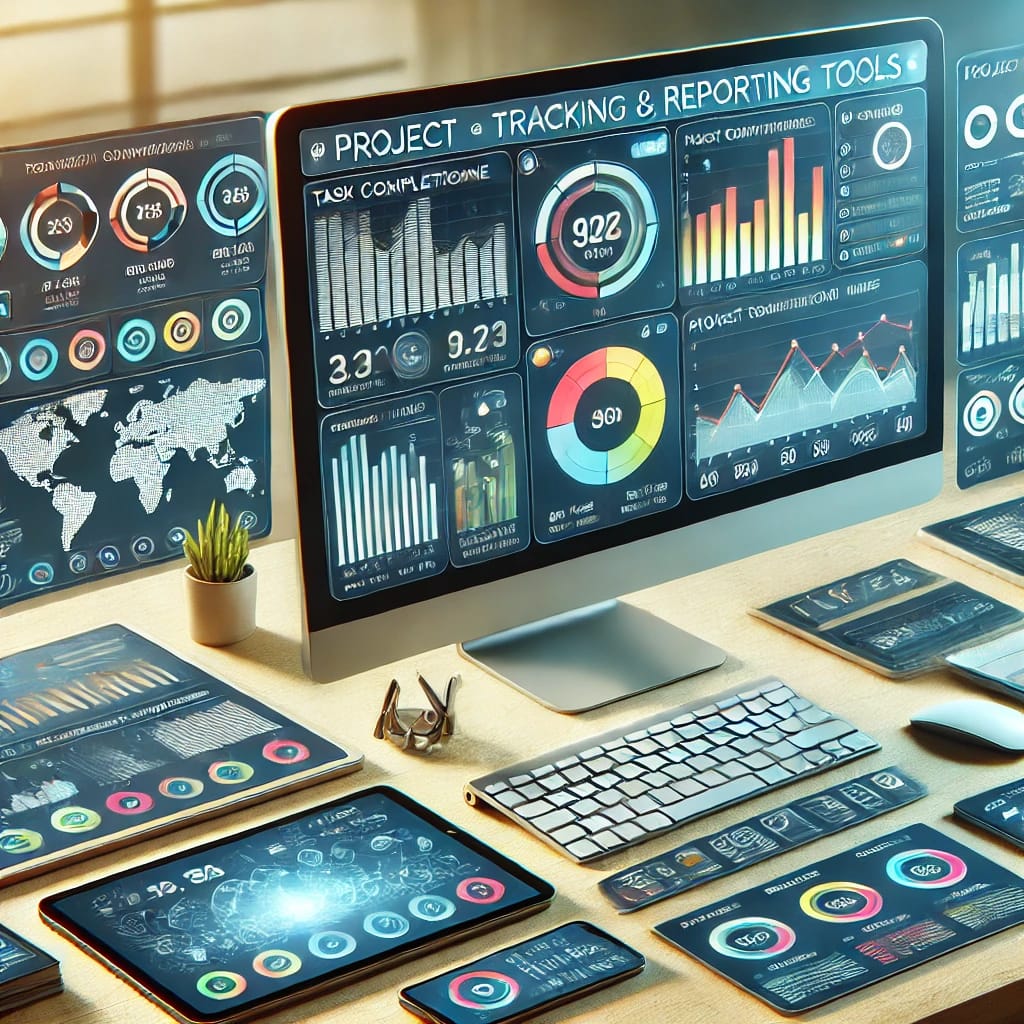Project Tracking and Reporting Essentials for Remote Teams to Stay Aligned: Tools, Practices, and KPIs
Introduction to Project Tracking for Remote Teams
Remote work has become a dominant force in today's work environment. As more teams move to remote settings, the need for effective project tracking becomes increasingly essential. In this article, we’ll explore the importance of project tracking, the challenges faced by remote teams, and the tools and practices that can address these issues. We'll also delve into reporting mechanisms, communication strategies, and methods for measuring project success.
Importance of Project Tracking
Project tracking plays a vital role in ensuring tasks are completed on time and to the required standard. For remote teams, it’s even more critical as it helps maintain productivity and ensures everyone is on the same page despite the physical distance.
- Accountability: Clear project tracking helps hold team members accountable for their tasks. When everyone knows what is expected of them and what deadlines must be met, it makes it harder for tasks to slip through the cracks.
- Transparency: It allows all team members to see the status of various projects, fostering a sense of unity and shared responsibility.
- Performance Measurement: By tracking project progress, managers can easily identify areas where the team excels and where improvements are needed, making performance evaluations more precise and actionable.
Challenges of Remote Work
While remote work offers flexibility, it comes with its set of challenges, particularly in project management.
- Communication Gaps: Remote teams often face communication challenges due to different time zones and lack of face-to-face interaction.
- Isolation: Team members may feel isolated, which can lead to disengagement and lower productivity.
- Distractions at Home: A home environment is filled with potential distractions that can disrupt the workflow.
By understanding these challenges, we can better equip ourselves with tools and practices to overcome them.
Essential Tools for Project Tracking
Project Management Software
Project management software is a must-have for any remote team. It centralizes tasks, deadlines, and resources in one place, making it easier for team members to stay organized and for managers to oversee progress.
For instance, Scrumbuiss offers a variety of features that cater to project management needs. With Kanban boards, users can visualize the progress of tasks, assign responsibilities, and set deadlines, ensuring a streamlined workflow.
Collaboration Tools
Effective collaboration tools help bridge the communication gap inherent in remote teams. These tools can include shared documents, real-time chat applications, and video conferencing platforms.
- Slack: A real-time messaging app that keeps conversations organized in channels.
- Google Workspace: Offers shared docs, sheets, and calendars to keep everyone on the same page.
- Zoom: Reliable video conferencing for team meetings and project discussions.
Time Tracking Applications
Time tracking tools help monitor how time is spent on various tasks and projects, offering insights into productivity and helping in future project estimations.
- Toggl: A simple and intuitive tool for time tracking.
- Clockify: Offers time tracking, timesheets, and reporting features.
Key Practices for Effective Project Tracking
Setting Clear Goals and Milestones
Achieving project success starts with setting clear goals and milestones. Specific, measurable objectives provide a roadmap for the team to follow.
- Define Objectives: Clearly outline what the project aims to achieve.
- Set Milestones: Break down the project into manageable milestones to track progress and make adjustments as needed.
A well-documented project plan not only gives direction but also sets expectations for deliverables and timelines.
Regular Progress Updates
To keep everyone aligned, regular progress updates are crucial. These updates can be in the form of daily stand-ups, weekly check-ins, or regular status reports.
- Daily Stand-Ups: Short meetings where team members share what they worked on, what they will work on, and any blockers they face.
- Weekly Check-Ins: More detailed sessions that cover the accomplishments of the week and plans for the next.
Prioritization of Tasks
Not all tasks hold the same weight in a project. Prioritizing tasks helps identify which ones need immediate attention and which can be scheduled for later.
- Urgent vs. Important: Distinguish between tasks that are urgent (requiring immediate action) and those that are important (contributing to long-term success).
- Task Dependencies: Identify dependencies to ensure tasks are completed in the correct order.
Reporting Mechanisms for Remote Teams
Types of Reports
Different types of reports serve various purposes in project tracking:
- Progress Reports: Highlight the ongoing status of projects and tasks.
- End-of-Project Reports: Summarize the outcomes and lessons learned at the end of a project.
- Performance Reports: Evaluate the performance of team members and the project as a whole.
Report Frequency
The frequency of reporting should be balanced to provide enough oversight without becoming a burden.
- Daily Reports: Useful for high-paced projects requiring constant monitoring.
- Weekly Reports: Offer a broader view of progress without overwhelming the team.
- Monthly Reports: Ideal for long-term projects to review overall trends and outcomes.
Visual Reporting Tools
Visual tools can significantly enhance the clarity and impact of reports. Graphs, charts, and dashboards offer a quick overview of project status and performance.
- Gantt Charts: Visualize project timelines and task dependencies.
- Kanban Boards: Show the flow of tasks from initiation to completion.
- Dashboards: Provide a real-time snapshot of key metrics and progress.
Enhancing Team Communication and Alignment
Scheduled Meetings and Check-Ins
Regularly scheduled meetings help maintain consistent communication and keep everyone aligned.
- Weekly Team Meetings: Discuss the week's achievements and upcoming plans.
- One-on-One Check-Ins: Offer personalized feedback and address individual concerns.
Transparent Communication Channels
Open communication channels are vital for remote teams. Ensuring everyone has access to the same information helps avoid misunderstandings and fosters trust.
- Document Everything: Keep meeting notes, project plans, and updates accessible to all.
- Open Forums: Use platforms like Slack to create channels where team members can share ideas and ask questions.
Feedback Loops
Feedback loops are essential for continuous improvement. Constructive feedback helps in identifying areas for improvement and reinforcing successful practices.
- Regular Feedback Sessions: Schedule sessions to provide and receive feedback on work.
- Anonymous Surveys: Use tools like SurveyMonkey to gather honest feedback from team members.
Measuring and Analyzing Project Success
Key Performance Indicators (KPIs)
KPIs are quantifiable measures that help evaluate the success of a project. Some common KPIs include:
- On-Time Delivery: Percentage of tasks completed on schedule.
- Budget Adherence: Comparison of actual vs. budgeted costs.
- Quality of Work: Measured through customer satisfaction and defect rates.
Gathering and Analyzing Feedback
Feedback is crucial for measuring project success and identifying areas for improvement.
- Client Feedback: Collect feedback from clients to gauge satisfaction and areas for improvement.
- Team Feedback: Understand team members' perspectives on the project’s success and challenges.
Continuous Improvement Practices
Continuous improvement practices involve regularly evaluating and refining processes to enhance efficiency and effectiveness.
- Lessons Learned Sessions: Conduct sessions at the end of each project to discuss what went well and what could be improved.
- Process Audits: Regularly review and assess project management processes.
By incorporating these practices, tools, and techniques, remote teams can effectively track progress, maintain alignment, and achieve their project goals. For an AI-powered project management solution that simplifies these processes, consider exploring Scrumbuiss. Get started today to elevate your project management efficiency and drive better outcomes for your remote team.
Ready to take your project management to the next level? Sign up for Scrumbuiss today!
About the author

Penify creator, Fullstack developer, Typescript, Web, Apps, Blogger
I am an experienced Fullstack web developer and the creator of Penify blog platform. I am excited and motivated to explore new technologies. I am a dedicated and hardworking person with a will to create the best user experience.
